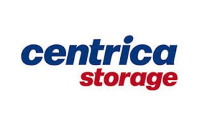Green Hydrogen Generation from Waste Water
Hydrogen is increasingly becoming a critical fuel in order to decarbonise hard-to-abate sectors and as a possible solution for decarbonising heat. Whilst hydrogen at an industrial level is focused on large production from methane-reforming utilising natural gas or through electrolysis powered by offshore wind, there are other options for hydrogen generation.
2 min read

Research driven solutions
As part of a knowledge transfer partnership, Centrica Storage has been pioneering an approach with the University of Hull to look at how electrolysis of waste water could be used to treat the complex and challenging waste streams from oil and gas assets. This research has proven that electrolysis is a viable application and offers some significant benefits over traditional water treatment especially in the offshore environment where usage on discharge to sea samples achieved 3ppm hydrocarbon levels without the need for activated carbon filtration.
Further research is being conducted on two applications of the technology to produce green hydrogen from waste water or the recovery of precious metals from waste streams.
With such a high capital cost of treating waste water either through the water treatment networks and/or through key industrial sectors such as the chemicals industry, it may be possible at a ‘marginal cost’ to add electrolysis into the water treatment systems across the UK. Powering the electrolyser could be done using various forms of renewable energy and could create a circular system that produces hydrogen as part of waste water. This could be utilising anaerobic digestion (AD) plants, ‘sludge’ from the sewer system or linking agricultural AD plants connected to the water treatment network.
This would produce hydrogen at a ‘sub industrial’ scale and create an additional energy source that could be distributed as electricity via fuel cells amongst communities, business parks or public sector users (hospitals etc.). The technology could be applied to water treatment infrastructure across the UK and beyond and would utilise existing renewable energy production that exists already. This has the advantage of creating a ‘distributed network of hydrogen' rather than large centralised hydrogen facilities and industrial storage.


Cost saving
For the chemical industries, the loss of catalytic precious metals in reactors leads to an ongoing cost as these are not recovered during current waste water treatment.
The adaption to add electrolysis to waste water treatment would allow treatment of the waste-water with the added benefit of precious metal recovery for potential re-use or sale. This could be conducted directly at chemical factory sites or for hazardous waste water management companies.
Hydrogen
Green energy
Clean fuel from waste product
Cross-industry applications
“
Electrolysis is a viable application and offers some significant benefits over traditional water treatment”
Contact
Invest Humber: Clean Growth in the UK’s Energy Estuary was created and is managed by Future Humber.
Future Humber promotes the region's distinctive strengths to the widest audience and accelerates opportunities to unlock the potential in the Humber.
Diana Taylor is the Managing Director of Future Humber. She is responsible for guiding the vision and strategy to market the Humber to the UK, Europe, and beyond. Diana works with partners and stakeholders to build the voice of the region and enable businesses and organisations within the Humber to succeed and grow.
If you have a question about Invest Humber or would like to find out more about any of the projects included on the website, you can contact Diana below.








